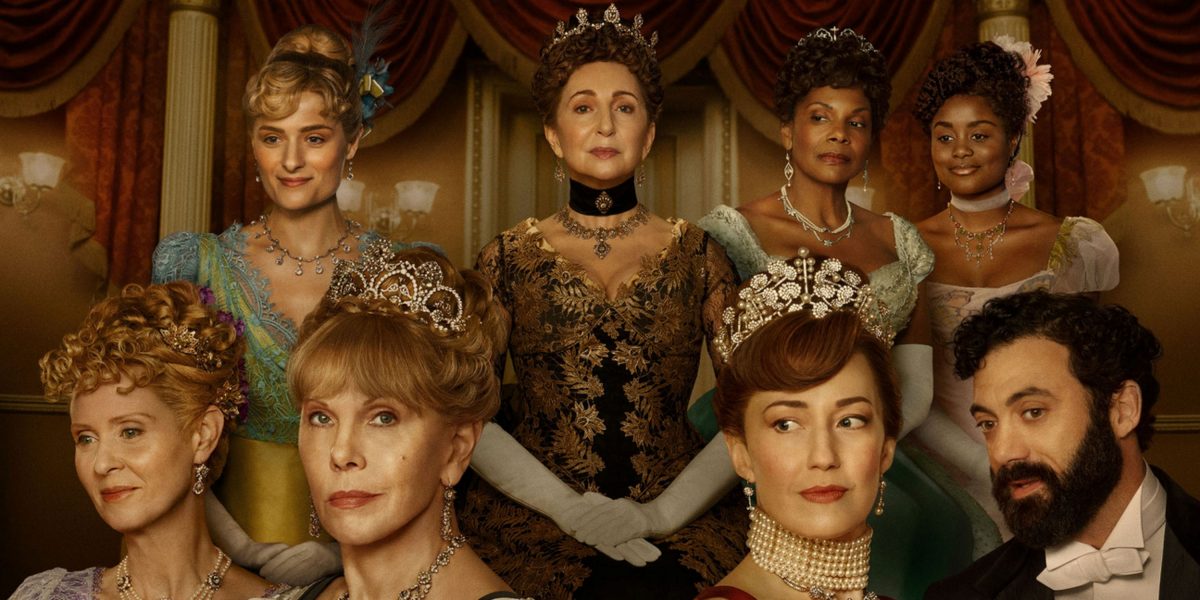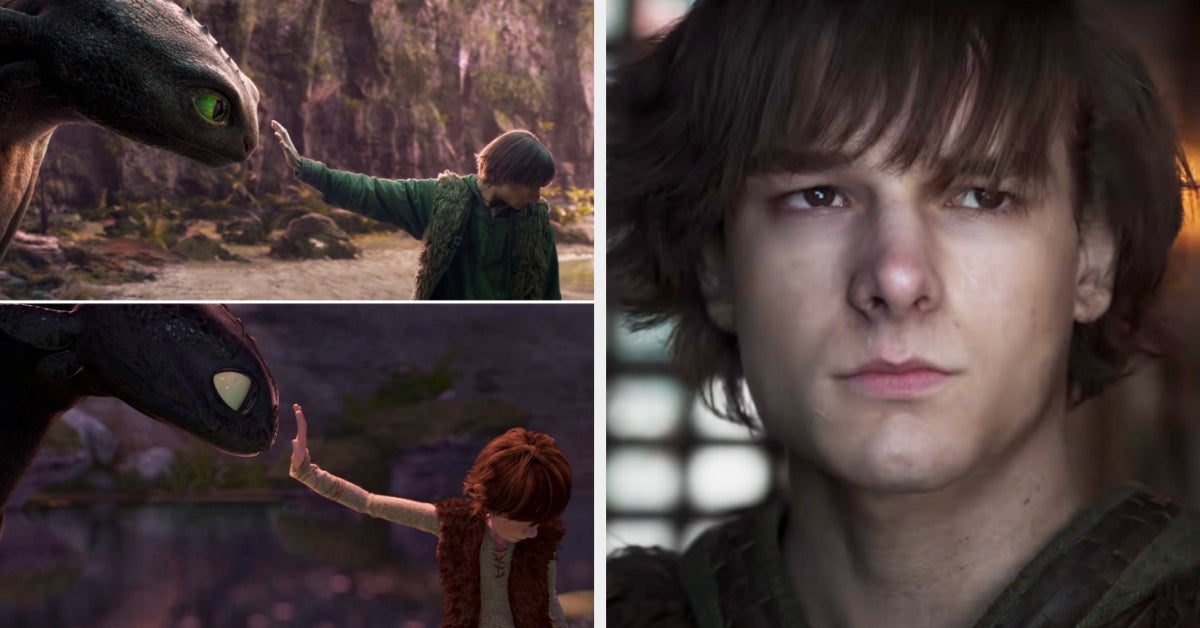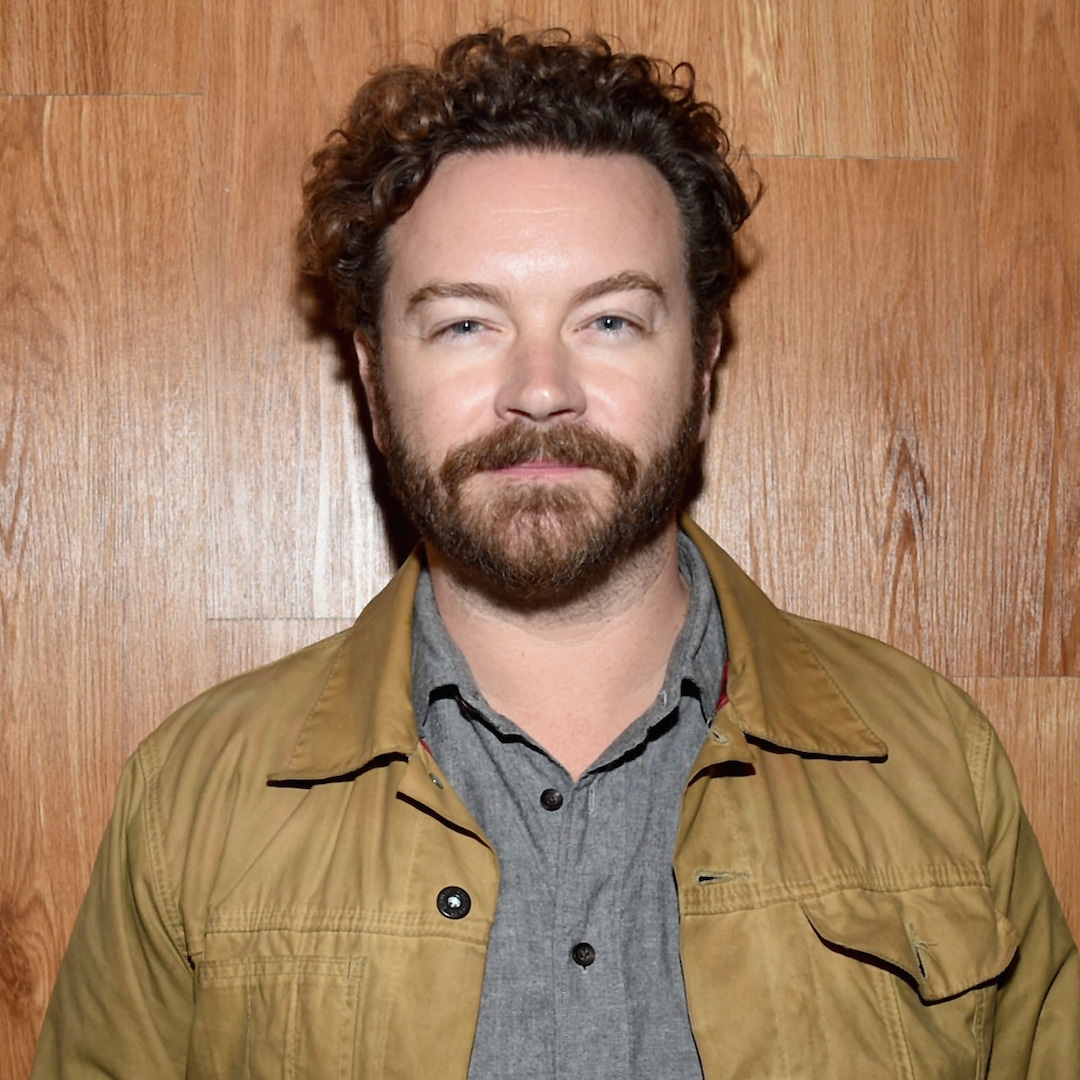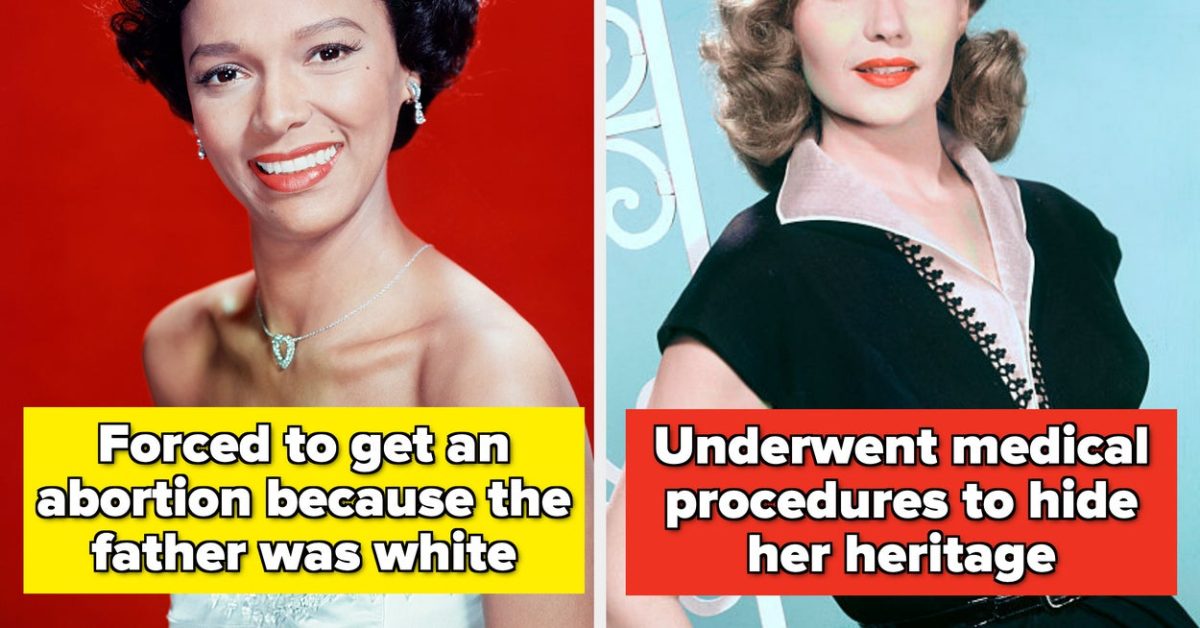
‘The Gilded Age’ Season 2 Production Designer Creates a Lavish World
Oct 28, 2023
The Big Picture
The Gilded Age Season 2 features lavish sets and elaborate costumes, with the Opera Wars taking center stage as Bertha Russell works her way up in high society. Production designer Bob Shaw discusses the challenges of creating bigger and more extravagant sets for the show, including designing a breathtaking Opera House. Shaw explains that coordination between set design and costume design is necessary to ensure that characters don’t blend into the sets but doesn’t need to be done on every detail. Additionally, he acknowledges the contradictory nature of creating extravagant sets only to tear them down after production.
From creator Julian Fellowes (Downton Abbey), Season 2 of the HBO series The Gilded Age sees the Opera Wars move front and center, as Bertha Russell (Carrie Coon) continues to work to solidify the leading role in high society that she desires. At the same time, Ada (Cynthia Nixon) finds the beginnings of a new courtship while Marian (Louisa Jacobson) questions her own feelings about romance and Agnes (Christine Baranski) just wants everything to remain as it is.
The world of The Gilded Age, from the lavish sets to the elaborately detailed costumes, is epic on every level. During this 1-on-1 interview with Collider, production designer Bob Shaw talked about how everything always starts with the research, the challenge of having to up the ante and make things bigger, creating Bertha’s lavish Opera House party, how they’re always allowed to go the extra mile when it comes to the design, what it took to pull off the new Opera House, making sure no one ever disappears into the sofa, designing the lively kitchens, and whether it’s ever a little bit sad to tear the sets down once a production is finished.
Collider: When you started on this show, where did you even begin? As a writer, the blank screen is sometimes terrifying. Is there an equivalent of that when it comes to what you do? Do you have a process for where you always start a project?
BOB SHAW: We always start with the research. You meet with the producers and you decide what the scope is gonna be and what you’re gonna build. It was always a given on this show that we were gonna have to build the backlot, which is the street that they live on, because we needed to use it so often that there was certainly no scenario where we were going to close down the street in New York. The appropriate streets in New York were a mixed bag of period appropriate building, but then an apartment building that had been built in the middle of the block, and all that sort of thing. So, we start with what we’re gonna build. In this case, we knew we were building a backlot and we knew that the most important thing in the show was the relationship between the Russell House and the Van Rhijn House, and that we were never gonna find that, so we just started drawing. I was always waiting for someone to say that they were gonna rein us in, and they didn’t. If anything, time was more of a consideration than money – what we could do in the time that we had. In a certain way, that we had to break and shut down during COVID actually extended our schedule and it gave us just enough extra time to make it over the finish line with certain things, like our backlot.
Image via HBO
Does it get easier from season to season, as you get to know the project that you’re working on better, or does it get harder because you’re building on it and it’s getting bigger?
SHAW: The challenge is to up the ante and to make it bigger. We had two big party scenes in Season 1. We had Bertha when she had her disastrous failure of an at-home. And then, we had the finale, which was the ball for Glady’s coming out into society. And so, one of the first scripts we got this year was Bertha having a reception to get people interested in investing in the new Opera House. The description was more or less the same. It was like, “The house is resplendent and bedecked with flowers.” We’d bedecked the house with flowers for the at-home and we did the same thing for the ball, so we had to do more. The cue for me was in the script. As you know, they go in to have dinner, but during the time that they’re gone, this whole opera set is in the front entry. That was not the description. It wasn’t a whole set, but I felt that we needed to do something that was more than just regular decoration. The character Mamie Fish says, “Well, this isn’t possible.” So, what wouldn’t she think was possible? She would think it would be possible for them to put out some flowers, but she wouldn’t think that they were gonna put a whole theatrical set with painted trees and painted houses and a wishing well, and cover the carpet and stairs with things that are all green. That was an example of kicking it up a notch.
Do you have to make sure something like that could actually happen, or can you fudge that a little bit?
SHAW: That’s one where I can’t say for sure that it would have happened. But when you read the descriptions of some of these different balls, they were constantly trying to top each other. If someone had a ball that was the best of the season of 1882, someone definitely wanted to have the best ball of the following season. The famous ball that Alva Vanderbilt had was crazy. The costumes were crazy. There was a woman who had a taxidermy cat on her head. They would just do nutty things, and these parties went on, all through the night. It’s hard for us to get up to the level that they actually achieved.
When it comes to each design, is there one thing that you do that feels like you’ve made that final finishing touch, or does it always feel like a constant and ongoing evolution? Do you always tinker with things?
SHAW: We haven’t tinkered with the two main houses much, from Season 1 to Season 2. There are a couple pieces of furniture where I said, “If we need to replace it, Bertha can just update it or decide she doesn’t like something. Otherwise, it varies per set. The great thing about this show is that we have always been allowed to go the extra mile. We’re like, “It would be nicer if we could add this, or we could add this extra layer of marble, or if we could do this extra special kind of curtains.” And the answer has always been, “Yes.” Out biggest constraint is time. We might be able to have the money to have a certain kind of drapes made. The drapes in the Russell House are very complicated and take a very long time to make, and if we’re suddenly doing another episode and we need that in 10 days, sometimes we just don’t have time to go the full distance because they’re complicated. If you really looked at the drapes in the Russell House, they’re very, very complex.
Image via HBO
When we watch a period series like this, we get to marvel at the beauty of the finished product. Considering everything you’ve gotten to create for this, is there something you’re most proud of when it comes to the design? Is there something that you had never done before, or something that you just were excited about getting to pull off for the show?
SHAW: The Opera House this season is the biggest leap for everybody because we decided we were gonna film in the Academy of Music in Philadelphia. The whole storyline is about who’s gonna get a box at the opera, and The Academy of Music is architecturally beautiful and perfect for the period, but it has no boxes. We actually had to build the boxes on stage, and then photograph them separately and slide them in between the first and second balconies at the Philadelphia Academy of Music. In theory, we thought it would work, but we’d never done it before. I said to Douglas Purver, our vfx coordinator, “This should work, right?” We knew that, in theory, it would work, but we’d never done it before, trying to seamlessly add architecture to this Opera House. It was very tricky because we had columns on our balcony level and they had to line up perfectly with the columns that were already in the Opera House. At one point, someone was drawing it and they made a change because they thought something would have needed a little more room, and I was like, “No, you can’t change that, then the columns won’t line up.” That was the biggest challenge and that was the thing where I’ve never really done anything quite like that before.
I was amazed by the wider shots, seeing how everyone could interact with each other and see each other. It was just so incredible to watch all that.
SHAW: We probably had more meetings on that and more discussions of how it was gonna work than anything. At first, it was, “Well, do we need to build two boxes? Do we need to build three?” Ultimately, we decided we needed to build five. Because of the shape, they could twist them around and cheat, and make the back look like it was part of the side and that sort of thing. That was a tricky one.
When it comes to the sets, do you also have to think about the costumes and the colors and the looks that people will be wearing, to make sure it doesn’t clash with the environment, or is it impossible to do things like that when you have so many characters in some of these scenes?
SHAW: It’s impossible for every day. For things like big party scenes and things that really have a theme, (costume designer) Kasia [Walicka Maimone] and I will discuss the color palette a little bit more. We more or less agree that, except for certain things that we know will look bad in the established sets because everything is very red, very burgundy, very dark in the Van Rhijn House and certain colors don’t work as well in there, that for the most part, people don’t dress to coordinate with their sofa. The costumes really stand alone. They’re very vibrant. A lot of people ask about the colors and say, “The colors weren’t that bright in those days,” and yes, they were. But we don’t coordinate everything. We give Kasia an idea of what the major elements are and what the major upholstery pieces are, so she doesn’t dress somebody in the same sofa fabric in a scene and the person doesn’t disappear into the sofa. It’s key bits of coordination, but it’s not across the board. That would be unmanageable.
Image via HBO
When you have to think about kicking it up a notch for something that’s already epic, how do you go bigger? Is there a limit to how extravagant it can get? Have you found that limit yet?
SHAW: I don’t think we’ve found that limit, but there are a lot of factors involved. When we did the opera scenery in the Russell House, we actually did not have much more time than Bertha’s staff did to set it up. I think the same entry of the Russell House actually had to be used for another scene later in the day, that didn’t involve all the opera scenery. They did that scene, and then they went somewhere else, and during that time, we had to quietly get rid of all the scenery. That happens all the time. We could go really, really big, but if they’re not able to give us two weeks in the schedule where no one is using the Russell House, then it’s hard. There are so many moving parts in a show like this, and everything has to be taken into consideration.
I love that we also get to see the kitchens in these lavish homes. I would be so intimidated by being inside of any of these houses that the kitchen feels like the place to hang out, if you’re not used to being around that kind of incredible wealth. What do you most enjoy about creating the look of the kitchens? Does it feel like there’s a different life to them?
SHAW: There is, which is definitely a part of the story. We had drawn a very elaborate kitchen set for the Russells, and then we did a page count and figured out how much it was needed in the first season and we decided to use the kitchen at the Elms in Newport, which was pretty much intact. We only had to add things to it. The kitchen for the Van Rhijn House is a little bit invented. People who had that kind of house and were of that level weren’t taking photographs of the kitchen. There are a couple of little pieces of a stove, but there’s really nothing that shows a complete kitchen. Some of that was learned by talking to a friend of mine who owned a brownstone that she renovated in the seventies, and she was the third owner. A lot of the original things were in place before it was renovated. I asked, “Where was the kitchen? Where did the cook sleep?” They had to gather somewhere. That was a little more of serving the story more than history. One of the things was that apparently the cook always slept downstairs. We have the men sleep downstairs and the women, including the cook, are all on the upper floor. But the truth of the matter is that the cook lit the oven and it took a while for the oven to warm up in those days, so he or she needed to be down near the oven.
I would have been so terrified to break anything, in any of these homes.
SHAW: I don’t think anybody relaxed. You sit on the furniture, but they were not for putting your feet up or being at ease. Even more so in the world of the Russells. It’s pretty well known that Alva Vanderbilt, historically, was the model for Bertha Russell, and her daughter, Consuelo, complained about how you had to sit upright in your chair and your back was not supposed to touch the back of the chair, so her mother had this contraption made that had iron straps that went around her neck and down her back to make sure that she sat upright. Not just teaching her to sit upright, but really training her. The idea that someone had to live like that, and that it was a breach of etiquette if you sat back in your chair, is just crazy. It’s crazy that, in this country, people couldn’t wait to make their own hierarchy and their own rules and, essentially, their own royalty. It’s like, “I thought we were at the place where we weren’t gonna have that.” People invented it because they wanted it, the same way they want to follow the Kardashians, for whatever reason, I don’t know.
Image via HBO
Does it ever get a little bit sad to design these incredible creations, and then have to get rid of them?
SHAW: I made my peace with that long ago. I’ve been doing this for a very long time. I’m more than 45 years into my career, designing stuff. Someone asked me, “If you got to keep one piece of memorabilia from the Season 2 sets, what would you pick?” I used to save little trinkets and little things, the first 10 years of my career. I really just don’t do it anymore. There’s definitely a contradiction in that the film industry says, “We’re trying our best to be environmentally friendly. This is a green production. We’re not going to print the call sheet. We’re just gonna send it to you digitally, so we can save all that paper.” And then, we’ll finish the series and we’ll throw the Russell House in the trash. There’s definitely a contradiction there. As much as everyone wants to be sustainable and environmentally sound, there are a lot of things that we have not figured out how to comply with that.
The Gilded Age airs on Sunday nights on HBO and is available to stream at Max.
Publisher: Source link
How To Train Your Dragon Live Action Vs Animated Movie First Trailer
Although not shown in the trailer, The Last of Us star Nico Parker will play Astrid. America Ferrera notably voiced the role in the animated films. DreamWorks, Mike Marsland / Mike Marsland / WireImage Disclaimer: This story is auto-aggregated by…
Nov 22, 2024
Danny Masterson’s Lawyers Criticized for Contacting Rape Case Jurors
Holley alleged in a Nov. 14 declaration that the two met for lunch the following day in Santa Monica, Calif. "During our lunch meeting, the foreperson was friendly, cordial and forthright," she continued. "She concluded our meeting by telling me…
Nov 22, 2024
Here Are 11 Heartbreaking Experiences That Prove Bodily Autonomy Was Non-Existent For Women In Old Hollywood
Justice for Judy Garland...View Entire Post › Disclaimer: This story is auto-aggregated by a computer program and has not been created or edited by filmibee.Publisher: Source link
Nov 21, 2024
Artem Chigvintsev & Nikki Garcia Settle Divorce 2 Months After Breakup
Trailing Total Bellas' fourth season finale, the WWE star took to Instagram Sunday night, March 24, with an adorable snapshot that saw her planting a sweet kiss on the DWTS pro's cheek. The photo seemed to reemphasize what the final moments…
Nov 21, 2024











